Last Updated on April 2, 2024 by Vinson Lozano
A common issue among cyclists is the frustrating experience of having a bike tire that keeps popping. This issue could stem from a variety of causes, due to either the tire itself or how it’s being used.
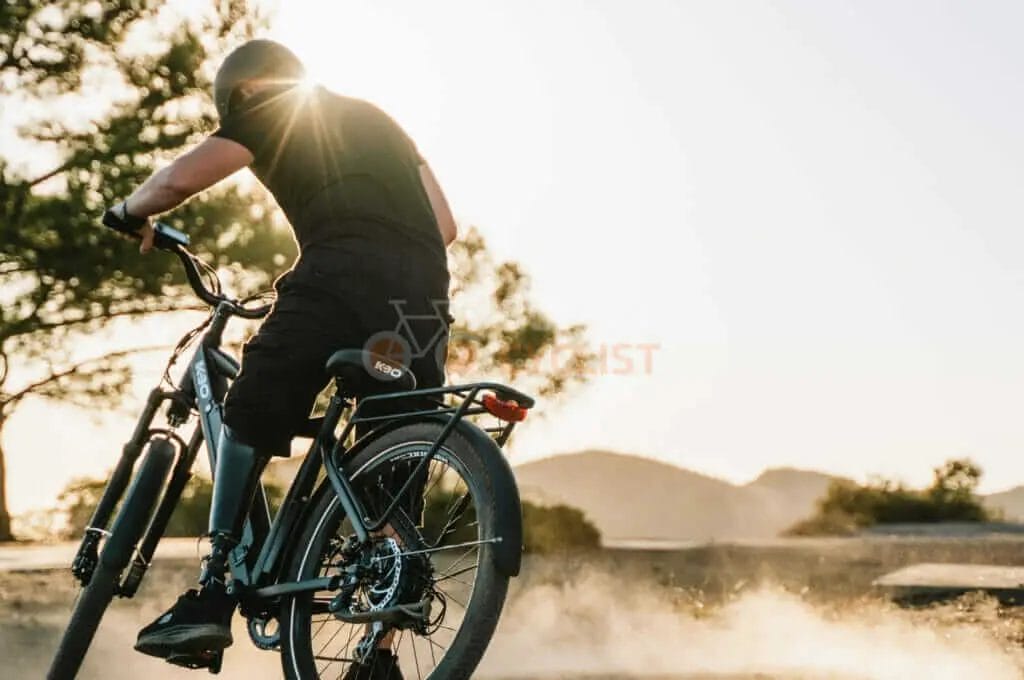
Common bike tire issues
Tire pressure: Over or under-inflation of your tire can lead to recurring punctures. While over-inflation leads to the tire bursting under heavy impact, under-inflation can cause pinching of the tube on the rims or sharp objects penetrating.
Road Condition: Frequently riding on rough terrains with debris, sharp objects or uneven surfaces can cause the tire to be punctured regularly.
Quality of tires and tubes: Your bike tire and tube quality plays a significant role as well. Cheap, thin-walled tires or tubes can easily succumb to sharp objects causing punctures.
Importance of a properly inflated tire
An appropriately inflated bike tire, as recommended by manufacturers, provides the best balance between performance and comfort. It reduces the chances of punctures, ensures optimal grip between the tire and road, and offers significant resistance against wear and tear, thereby increasing the lifespan of the tires.
In conclusion, keeping your bike tire in the best condition requires regular maintenance and attention to your bike’s tire pressure, road condition and the quality of the tires and tubes.
Overinflated Tires
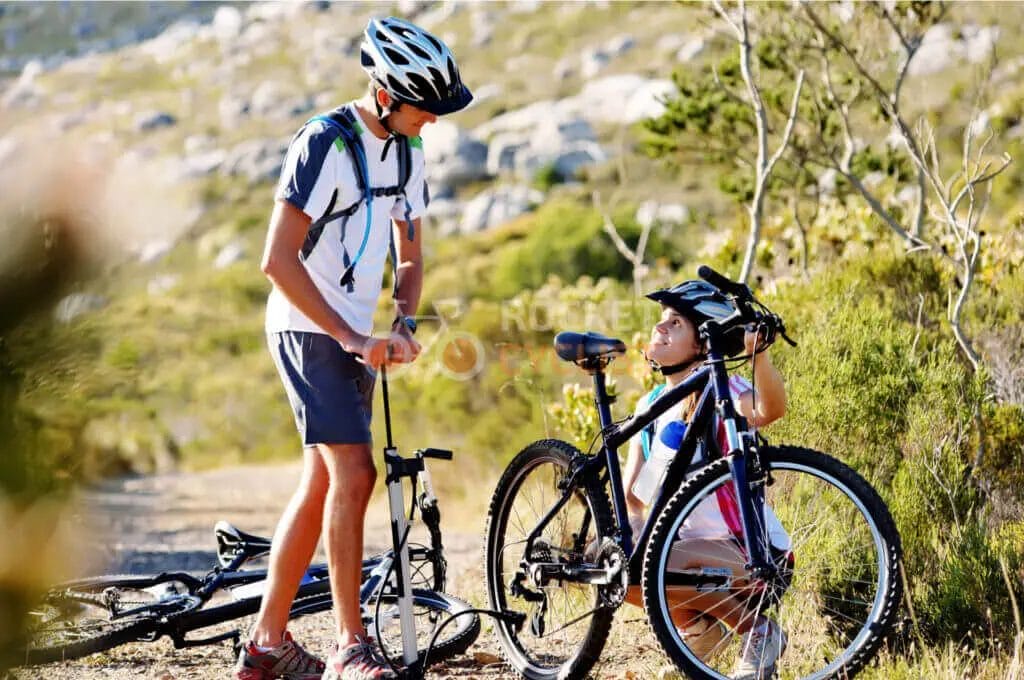
Overinflated tires are a common issue that could lead to your bike tire popping. But why does this happen exactly?
Causes of overinflated tires
Overinflation typically occurs when too much air is pumped into the bike tire. This might be due to a misunderstanding of the manufacturer’s recommended tire pressure, or simply oversight while inflating the tire. Using a proper tire pressure gauge can help ensure you are inflating your bike tires appropriately.
Effects of overinflation on tire popping
Overinflated tires have less flexibility and are more prone to damage when they interact with obstacles on the road. Bumps, sharp objects, and rough surfaces can cause strain on the tire, leading to punctures or tears. It reduces the tire’s performance and safety.
Here are some key points to remember:
- Always follow the manufacturer’s recommended tire pressure.
- Overinflation can lead to quicker tire wear and increased risk of punctures.
- Regularly check your tire pressure using a suitable tire pressure gauge.
In conclusion, to avoid the issue of bike tires popping due to overinflation, it’s crucial to inflate your tires correctly according to the manufacturer’s recommendation, and regularly monitor for appropriate pressure. If tire issues persist, it might be best to seek professional help to diagnose and address the problem.
Underinflated Tires
Underinflation is one of the leading causes of bike tire popping.
Causes of Underinflated Tires
There are a few common reasons why bike tires might be underinflated:
- Leaks: If there’s a small puncture in the tire, air can slowly leak out, causing underinflation.
- Infrequent checks: Many cyclists don’t check their tire pressure regularly. Over time, all tires naturally lose some air, leading to underinflation.
- Rough terrain: Riding over rough terrains like gravel or cobblestones can cause tiny leaks that lead to gradual underinflation.
Effects of Underinflation on Tire Popping
Underinflated tires can drastically increase the likelihood of tire popping, here’s why:
- Increased contact with the road: When a tire is underinflated, more of its surface comes into contact with the road. This can cause the tire to wear down quicker, making it more susceptible to punctures.
- Pinch flats: This is where the tire and the tube get pinched between the wheel rim and the ground or a sharp object, causing a flat.
Make sure to regularly check your bike tire pressure and adjust it according to the manufacturer’s recommendations, which will help avoid underinflation and, consequently, tire popping. Also, investing in a quality bike tire can reduce the frequency of underinflated tires and extend the life span of the bike.
Pinch Flats
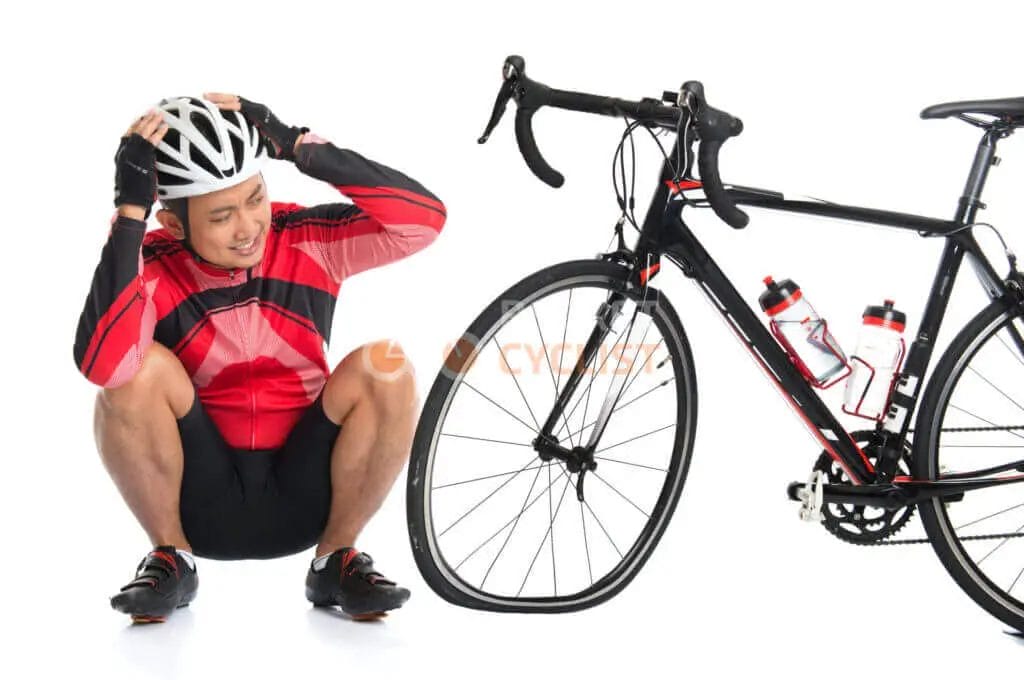
A common culprit of recurring flat bike tires is the Pinch Flat. Also known as “snakebite,” a pinch flat can be a cyclist’s recurring nightmare. Here’s a closer look at what causes this issue and how to prevent it.
Causes of Pinch Flats
A Pinch Flat occurs when an object or uneven terrain puts enough pressure on the tire, causing the inner tube to get pinched against the bike’s rim. This typically results in two parallel cuts giving it the nickname ‘snakebite’. Low tire pressure is a major cause of pinch flats as softer tires can compress enough to allow the rim to damage the tube.
Preventing Pinch Flats
Preventing pinch flats mostly involves keeping your tires properly inflated. Always ensure they are inflated to the recommended PSI (Pounds per Square Inch) guidelines as per your bike’s manual or the tire sidewall. Regular maintenance checks for tire pressure can greatly reduce the likelihood of pinch flats. Further precaution can be taken by avoiding sharp objects and rough surfaces when cycling whenever possible.
In conclusion, being knowledgeable about the common causes of tire pops like pinch flats and taking necessary precautions can significantly enhance your cycling experience.
Punctures
Punctures can be a cyclist’s worst nightmare, leading to flats that could disrupt a smooth ride or a planned trip. It’s important to note the causes of these punctures and what can be done to prevent them.
Causes of punctures
There are several reasons why your bike tires could be puncturing often:
- Sharp objects: Items such as glass shards, nails, and thorns commonly cause punctures and flats.
- Riding pressure: Over or under-inflating tires could lead to punctures. Too much pressure can make your tire vulnerable to sharp objects, while too little can lead to pinching against the rim.
- Poor quality tires: Cheaper, less durable tires typically are more prone to punctures.
Steps to prevent punctures
While punctures might seem inevitable, taking necessary precautions can help significantly reduce their occurrence:
- Regular check-ups: Frequently inspect your tires for any embedded sharp objects.
- Appropriate tire pressure: Ensure your tires are correctly inflated according to the manufacturer’s guidelines.
- Quality tires: Invest in puncture-resistant tires or tire liners for enhanced protection.
Knowing the causes and precautions can help cyclists deal with and prevent punctures effectively, leading to a smoother and more enjoyable riding experience.
Tire Quality
A significant factor not to overlook when your bike tire keeps popping is indeed the tire quality.
How tire quality affects tire popping
Subpar quality tires often lack the necessary resilience to withstand sharp objects, overinflation, or potholes on the road, leading to frequent punctures or blowouts. Low-quality materials used in the making of the tires wear off quickly, drastically reducing their lifespan and resistance.
Choosing high-quality tires
To avoid frequent tire popping, it’s advisable to invest in high-quality tires. These are made from durable rubber materials that can withstand road challenges, last longer, and provide a safer riding experience. Keep in mind that:
• Brand Reputation: Renowned brands often produce high-quality tires by incorporating advanced manufacturing technologies.
• Tire Ratings: Tire ratings such as speed, load, and inflation give invaluable information about the tire’s capabilities.
• Tire Thickness: Thicker tires tend to be more resistant to punctures.
Always remember, a higher initial investment in quality tires will reduce the frequency of tire popping and, in turn, save time and money in the long run. It’s an investment that will pay off.
Road Hazards
There’s little doubt that the state of the road plays a significant role in the health of your bike’s tires. Here, we will explore how road hazards can contribute to frequent tire popping and how to avoid it.
Impact of road hazards on tire popping
Biking on roads filled with potholes, sharp objects, and other debris can quickly lead to a popped tire. These hazards can puncture the rubber, especially if the tire isn’t correctly inflated or the bike doesn’t have a good quality tire. Glass, nails, sharp rocks, or metal can easily penetrate the tire, causing it to deflate rapidly.
Avoiding road hazards
Here are a few tips to avoid road hazards:
- Straight route: Try to choose a straight path without potholes or large debris when biking.
- Visual Inspection: Before starting your ride, visually inspect the road for potential hazards.
- Tire Pressure: Maintain the correct tire pressure. Over or under-inflation can make your tire vulnerable to punctures.
- Quality tires: Invest in quality tires designed to tolerate road hazards better.
Road hazards are inevitable, but being vigilant and taking preventive measures can significantly reduce the chances of tire popping. Happy biking!
Improper Installation
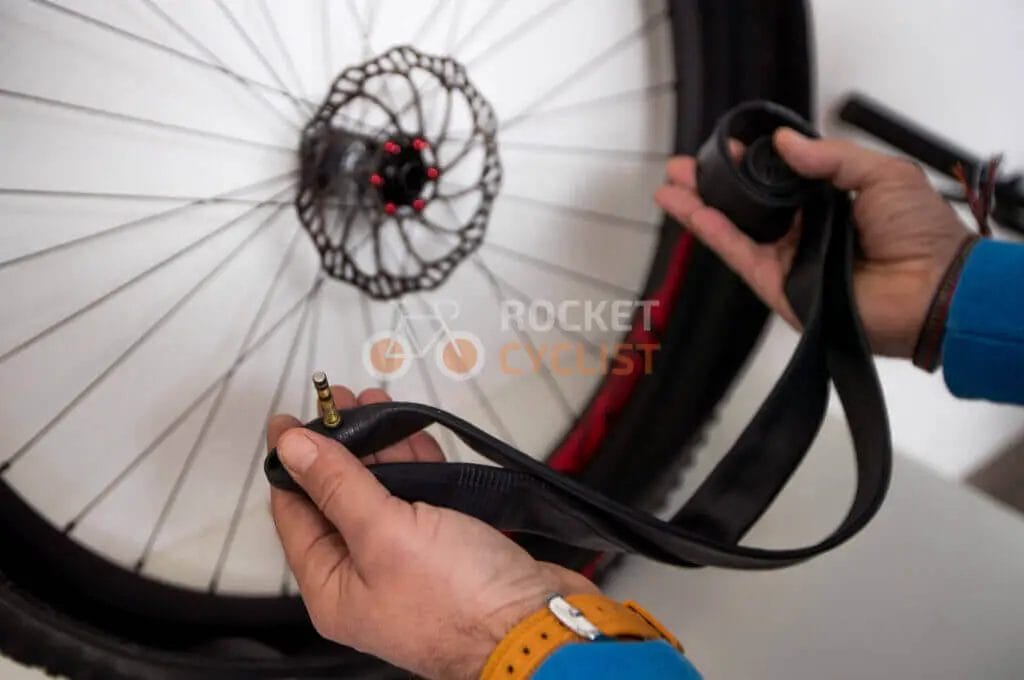
One of the most frustrating experiences for a cyclist is having a bike tire repeatedly pop. While they might be blaming the quality of their tires or the roughness of their route, sometimes the issue boils down to a simple improper installation.
Common mistakes during tire installation
Here are some common mistakes often made during tire installation leading to frequent tire pops:
- Mismatched tires and tubes: Using mismatched tires and tubes can cause undue pressure leading to tire pops. Verify sizes before installation.
- Incorrect pressure: Under-inflating can cause flats, and over-inflating can cause the tire to burst. Both should be avoided.
Proper installation techniques
Using the right techniques can save a lot of repair time and extend the life cycle of your tires. Here’s what to do:
- Verify sizes: Always check the size of your tire and tube before installation. Use the right tube for the right tire.
- Apply consistent pressure: Inflate the tire to the manufacturer’s recommended PSI (Pounds per Square Inch) values. Consistent pressure reduces the chances of tire bursts and improves the bike’s performance.
Remember, it’s not just about having a good tire but ensuring its proper installation and maintenance. Once you master these techniques, you will significantly decrease your chances of dealing with repeated tire pops.
Maintenance and Care
Many people often wonder, “Why does my bike tire keep popping?” If you’re one of those people, note that regular inspection and proper care can help prevent frequent tire punctures.
Regular tire inspections and maintenance
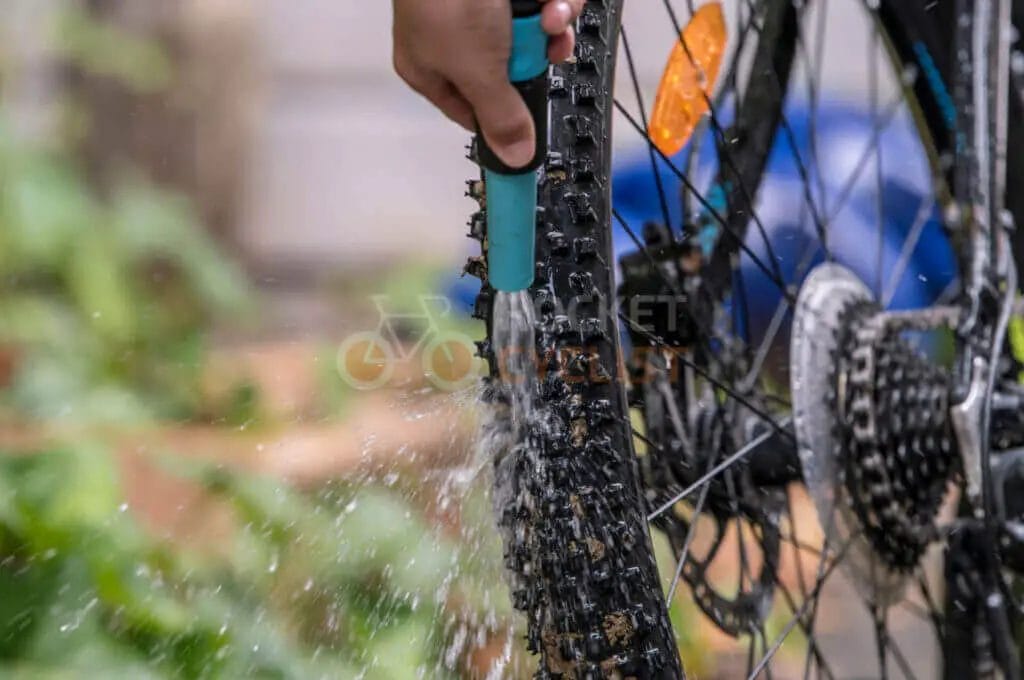
Regular tire inspections are crucial to identify issues early before they result in a flat tire. The cyclist should look for signs of damage such as cuts, sharp objects stuck in the tire, and worn out treads, which can make the tire vulnerable to punctures.
Proper tire care tips
Proper tire care involves several steps:
- Maintain recommended tire pressure: Under-inflated tires are more prone to punctures. Therefore, maintaining the ideal tire pressure as recommended by the manufacturer is vital. You can find this information on the bike tire.
- Avoid rough terrains: If possible, avoid cycling on rough terrains with sharp objects like glass, nails, and thorns which may puncture the tires.
- Use puncture-resistant tires or tubes: If bike tire punctures are frequent, consider investing in puncture-resistant tires or tubes.
By following these tips, you can significantly reduce the frequency of your bike tire puncturing.
Conclusion
In conclusion, there are several causes that might result in a bike tire popping. Regular inspection and maintenance are critical to prevent these issues and ensure a safe and comfortable cycling experience. Here are the main reasons and corresponding prevention methods:
- Over inflation: Excess pressure can cause the tire to burst. Always ensure the tire is inflated within the manufacturer’s suggested range.
- Punctures: Sharp objects like glass or nails can cause tire punctures. Regularly check the tire for sharp objects stuck in the tread. Using a puncture-proof tire can also help.
- Worn out tires: Over time, tires wear out and become more susceptible to popping. Regularly check your tires for signs of wear and replace them when necessary.
- Improper installation: If the tire is not correctly installed, it can pop out of the rim. Always ensure the tire is properly fitted and the bead is safely sitting in the rim’s hook when installing.
Regardless of how regularly you use your bike, regular tire checks should be part of your maintenance routine. Not only will this help prevent a flatted tire, but it will also ensure the longevity of the tires and overall safety while biking


